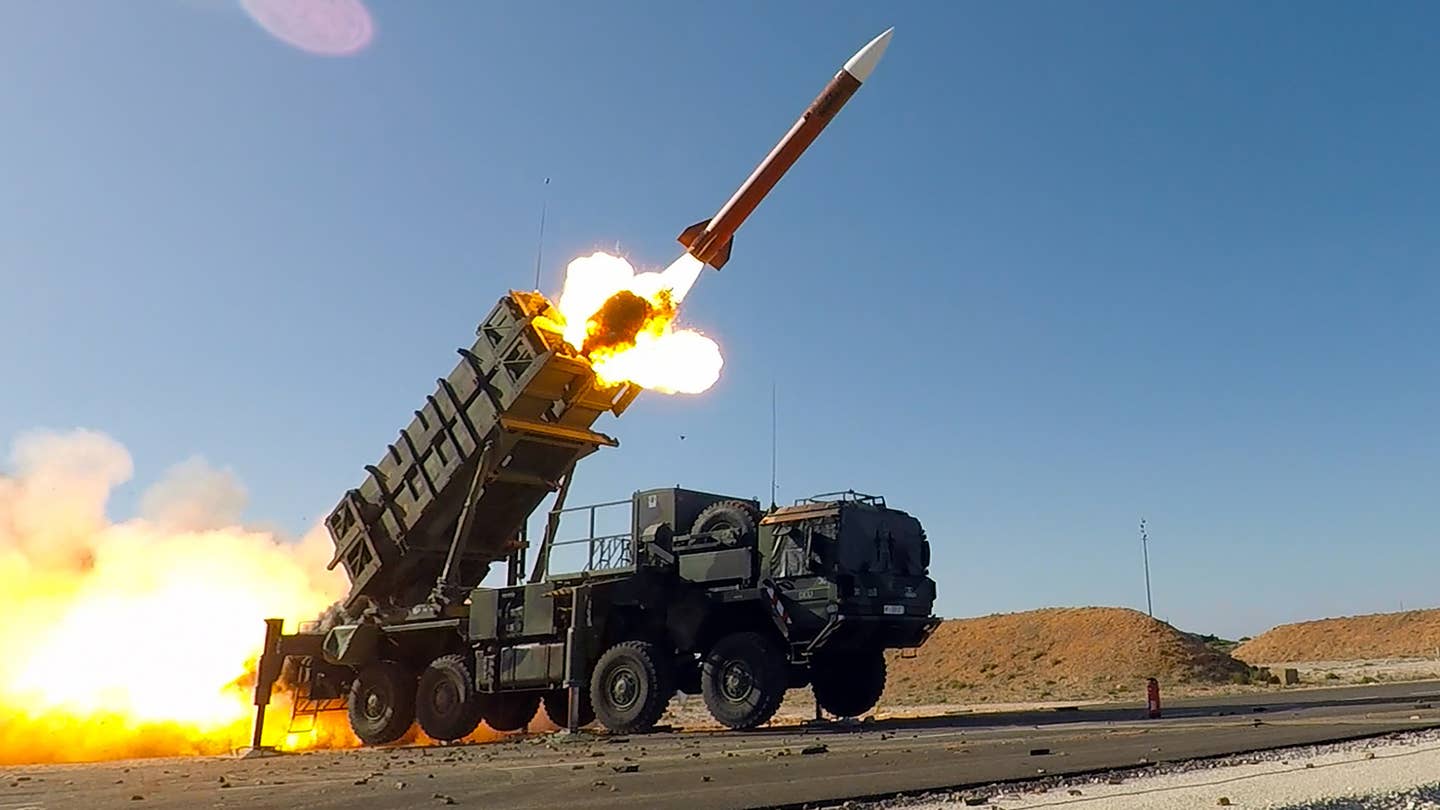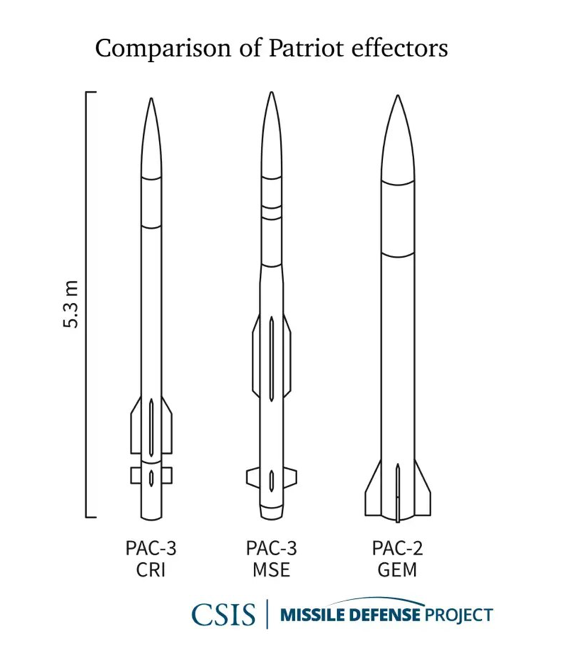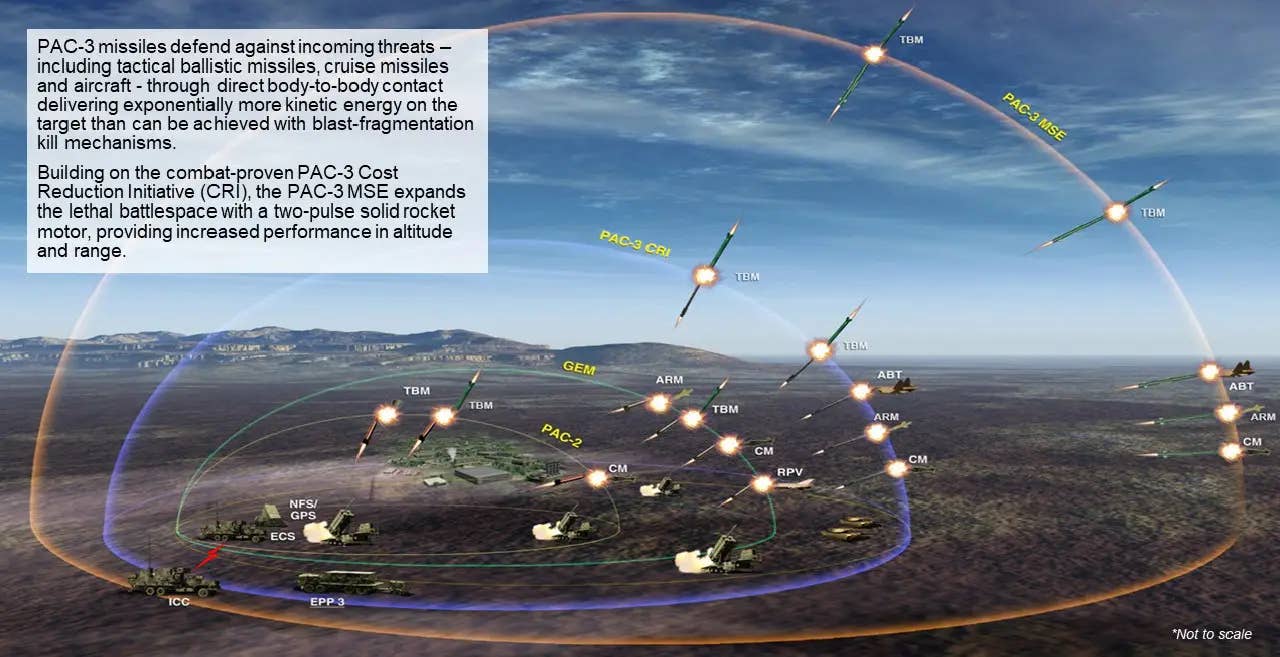OLIVER PARKEN

NATO has announced a new plan to help various European nations procure up to 1,000 missiles for the U.S. Patriot air defense system. This speaks to the surge in demand for Patriot amongst the U.S.'s allies and partners as of late, notably spurred by the war in Ukraine. The additional supply of Patriot missiles will help backfill stockpiles transferred to Ukraine, and could even eventually help free up further batches for transfer to the country. It also brings Patriot production to Europe, which has wider implications that could benefit the U.S. and the Patriot program overall.
The production and delivery contract award, revealed today, was issued to COMLOG — a joint venture between RTX, formerly known as Raytheon, manufacturer of the Patriot system, and European missile consortium MBDA Missile Systems Inc. — by NATO's Support and Procurement Agency (NSPA). Valued at up to $5.6 billion, the contract looks to procure the Guidance Enhanced Missile-Tactical (GEM-T) version of the PAC-2 Patriot missile, which is optimized for improved performance against ballistic missiles, as you can read about here.
In addition, the deal also includes the "qualification of updated components, [the] addition of new suppliers, test equipment, and spares to support future sustainment." Details on when the procurement of the missiles will begin, and for how long, have not been specified.
The original Patriot system was introduced to the U.S. Army in 1981, and first became available to those countries for procurement just a few years later. A typical Patriot battery, standing for Phased Array Tracking Radar for Intercept, comprises an AN/MPQ-65 or AN/MPQ-53 radar, and requisite fire control, communications, and other support components, alongside a total of eight trailer-mounted launchers.

The three basic Patriot missile configurations. PAC-2 GEM-T is an upgrade of the GEM.
In terms of which countries the deal impacts, NATO has noted that it applies to a "coalition of nations" including Germany, the Netherlands, Romania, and Spain.
All four countries have donated an unspecified number of Patriot missiles to Ukraine since the spring of 2023. According to the Oryx open-source intelligence group, Ukraine has so far received three Patriot batteries; one from the U.S. and another two from Germany; at least one of which consisted of German and Dutch components. The Netherlands has delivered a pair of Patriot launcher components to Ukraine.
More recently, Germany and the Netherlands announced additional Patriot interceptor donations to Ukraine in the fall of last year, in anticipation of winter strikes, which continue to eat away at those countries' stockpiles. For Ukraine specifically, Patriot missiles have proved effective for shootdowns of Russian Iskander short-range ballistic missiles and examples of the Kinzhal air-launched derivative, for example. This is beyond swatting cruise missiles and drones out of the sky. Russian aircraft are also known to have been downed by Ukrainian forces using Patriot missiles.
The procurement decision also has an industrial base benefit component, too, in terms of introducing European production of Patriot interceptors; the need for which has been amplified by the context of the Ukraine war.
"The contract strengthens industrial and military Capabilities in Europe," Thomas Gottschild, Managing Director MBDA Germany, said. "The order volume will enable MBDA to set up a production facility for Patriot missiles in Germany, as well as major subcomponent production. The COMLOG facility is currently the only one of its kind for the Patriot missile outside the US. Overall, the contract supports European Patriot user states, creates workplaces in Germany, and strengthens the supply chain for ammunition."
Previously, various European states, notably Germany, have looked to jointly procure Patriot systems in a bid to fill the gaps created as a result of donations to Ukraine.
Back in October 2022, Germany spearheaded the "European Sky Shield Initiative," designed to facilitate the common acquisition of air defense equipment and missiles by European nations which includes Patriot. Since then, Germany — alongside the Netherlands and other nations — has taken further steps to procure Patriot systems as well as IRIS-T SLM surface-to-air missile systems and Arrow 3 missile systems.
Concerns over supply and demand regarding Patriot missiles extend beyond Europe and NATO, too. Within the U.S., both Raytheon and Lockheed Martin are expanding their plants as part of a broader effort by the Pentagon to replenish Patriot interceptor numbers in light of donations to Ukraine and to meet fresh demand, as we noted back in July last year.

A graphic giving a very general overview of the kind of threats PAC-2, PAC-2 GEM-series, and PAC-3-series interceptors for the Patriot system are capable of engaging and at what relative ranges and altitudes.
Since then, the U.S. welcomed an offer by the Japanese government in December for the delivery of Patriot missiles, produced in Japan under an American license, to replenish its stocks, following changes to Japanese arms export restrictions. It should be noted that while the U.S. Patriot interceptor stockpile, the exact size of which remains classified, is one concern, tensions in the Middle East have highlighted the larger issue we previously raised about the size of the U.S. Patriot force. Israel has also received Patriots from the U.S. following the start of the war between it and Hamas, and the U.S. scrambled to move Patriot systems into place to protect its forces in the region. The Patriot force is more limited than some may realize and there are concerns about how many American Patriot batteries could be mobilized in a time of major crisis. This is especially concerning in regard to a potential conflict in the Pacific.
Although replenishing depleted NATO stockpiles remains the goal, it's possible that the contract could help Ukraine gain further Patriot missile deliveries down the road, as the promise of more interceptors for NATO powers in the future could incentivize them to free up further batches for Ukraine in the not too distant future. Still, spinning up production and realizing deliveries will take time.
Clearly Ukraine is in very desperate need of more Patriots for its air defenses, underscored by Russia's launching of large-scale missiles and drones against the country in the past few days, which included Kinzhals, Iskander-Ms, as well as cruise missiles.
As Ukrainian President Volodymr Zelenzky recently noted, Ukraine's foreign-donated Patriots have played a critical role in the defense of those attacks.
"For the third day already, our air defenders are doing incredible work. I thank all partners who help to strengthen our air shield. And it's obvious it helps save hundreds of lives every day and every night that would have been taken by Russian terror if it weren't for Patriots and other defense systems."
For NATO, it's clear that the solution to the threat is to be found in a collective approach to the problem.
"Russian missile and drone attacks on Ukrainian civilians, cities and towns show how important modern air defenses are," NATO Secretary-General Jens Stoltenberg said in a statement. “Scaling up ammunition production is key for Ukraine’s security and for ours."
Beyond that, distributing and increasing production of critical and complex weapons like Patriot interceptors around the globe will be beneficial to all involved. Not only is it strategically important to diversify production locations, but more Patriot production in multiple places should help gain greater economies of scale, lower cost, and provide a more elastic supply base. All of this is as critical to the U.S. as it is to Europe. The war in Ukraine and the degrading security situations elsewhere has made it clear that the current industrial base is inadequate and there is too much risk in maintaining its current footprint.
No comments:
Post a Comment